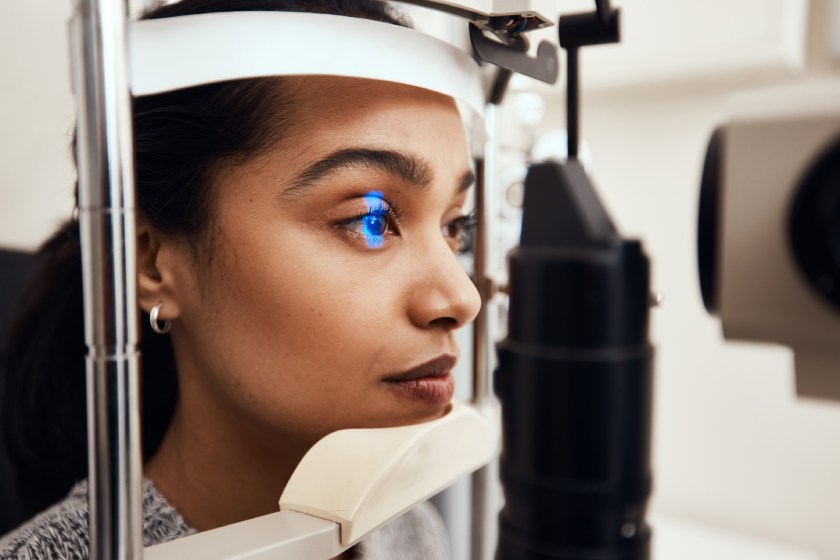Are you tired of relying on your glasses to see clearly? Or maybe you have started to dislike the fact that you need to poke your eyes with little silicone cups every day to see the world with all its details. If your answer to any of these questions was a strong YES, it’s time you consider laser eye surgery.
Now, if you’ve done a tad bit of research on laser eye surgery, you would know that there are two popular procedures—-LASIK and PRK. Which one do you choose? If you are confused, too, then this guide is for you!
We are going to cover the following essential points today—
- What is LASIK?
- What is PRK?
- Which one to choose?
What is LASIK?
Laser-assisted in Situ Keratomileusis, popularly understood as LASIK, is a quick and painless option for those who desire fast recovery time and minimal discomfort.
Procedure for LASIK Eye Treatment
During a LASIK surgery, the surgeon creates a thin flap on your cornea’s surface. They use a microkeratome or a femtosecond laser to do so. Next, this flap is lifted, and an excimer laser reshapes the underlying cornea to correct your vision. Once done, the flap is repositioned. Usually, the flap heals naturally without any stitches. Typically, it takes 10 minutes per eye.
LASIK Surgery Recovery Time
Most patients who undergo LASIK see an improvement almost immediately. However, your eyes may feel a little itchy, gritty, and watery. But it should settle down in a few days. Furthermore, most of them return to normal activities within 2-3 days.
Also Read – Understanding the LASIK Procedure: What to Expect Before, During, and After
What is PRK
PRK, or Photorefractive Keratectomy, is the first procedure that was developed to correct vision concerns. And it works quite differently than a laser. Moreover, individuals with thin corneas, steep corneas, or very athletic lifestyles are better suited for this procedure than LASIK.
Procedure for PRK Eye Treatment
If you are eligible for a PRK surgery, you will have to visit an outpatient clinic. Once comfortable, the doctor will numb your eyes. Next, he will use some tools to keep your eyes open and proceed with the surgical process.
Instead of creating a flap, PRK involves removing the thin outer layer of your cornea, called the epithelium. Following the removal, an excimer laser then reshapes the cornea to correct your vision. Typically, it takes around 20 minutes to complete a PRK surgery.
PRK Surgery Recovery Time
The recovery time for PRK is longer than that for LASIK. There can also be a little discomfort for quite some days following the surgery. For instance, blurriness, irritation, and light sensitivity. Usually, patients are suggested to wear special bandages to protect their eyes, and it may take 3 to 6 months for your vision to fully stabilize.
Difference Between LASIK and PRK – Which One to Choose?
Before we tell you which one to choose, let’s see the pros and cons of each. Here’s a quick overview.
| LASIK | PRK |
| Quick recovery, usually within a day or two. | Recovery takes about a week. |
| Most patients experience immediate improvement in vision. | Vision may be blurry during recovery. |
| May not be suitable for thin corneas or certain eye conditions. | Suitable for thinner corneas and dry eyes. |
| Risk of flap complications in rare cases. | No risk of flap complications. |
| Minimal discomfort and fast recovery. | Slower recovery and potential for more discomfort. |
Choosing the right vision correction procedure depends on a number of factors. The following are some of them
Corneal thickness: Not every procedure is suited for all patients, given the differences in corneal thickness. Since the cornea is an important eye part that undergoes surgery, it is important to consider its thickness. If you have a thin cornea, PRK may be a better option, as LASIK requires a certain corneal thickness to create the flap.
Lifestyle: Your daily activities and career also need to be considered before coming to a decision. For instance, if you are into contact sports or work in an environment where your eyes are exposed to physical impact, PRK may be a more appropriate choice. This is because it eliminates the risk of displacing the corneal flap, which could occur with LASIK.
Eye health: Pre-existing eye conditions, such as dry eyes, need to be taken into account. LASIK surgery can sometimes exacerbate dry eye symptoms because of the creation of the corneal flap. In such cases, PRK is a better choice.
Recovery Time: If you desire a shorter recovery time, LASIK is the ideal choice. Here, most individuals return to their daily activity in 2-3 days.
Also Read – 5 Eye Health Tips Essential for Optimal Vision
Wrapping Up
Whatever you choose, make sure to consider all important factors, like corneal thickness and recovery time. Also, be honest with your doctor about how your eyes feel so that any pre-existing conditions can be ruled out.
Needless to say, both offer excellent outcomes for vision correction, but the right choice depends on your individual needs and eye health. Speak with your doctor and then make the right choice!
Shree Ramkrishna Netralaya provides cutting-edge eye treatments tailored to your needs. For vision correction, trust us to deliver top-notch care and support. Contact us today for exceptional service!

